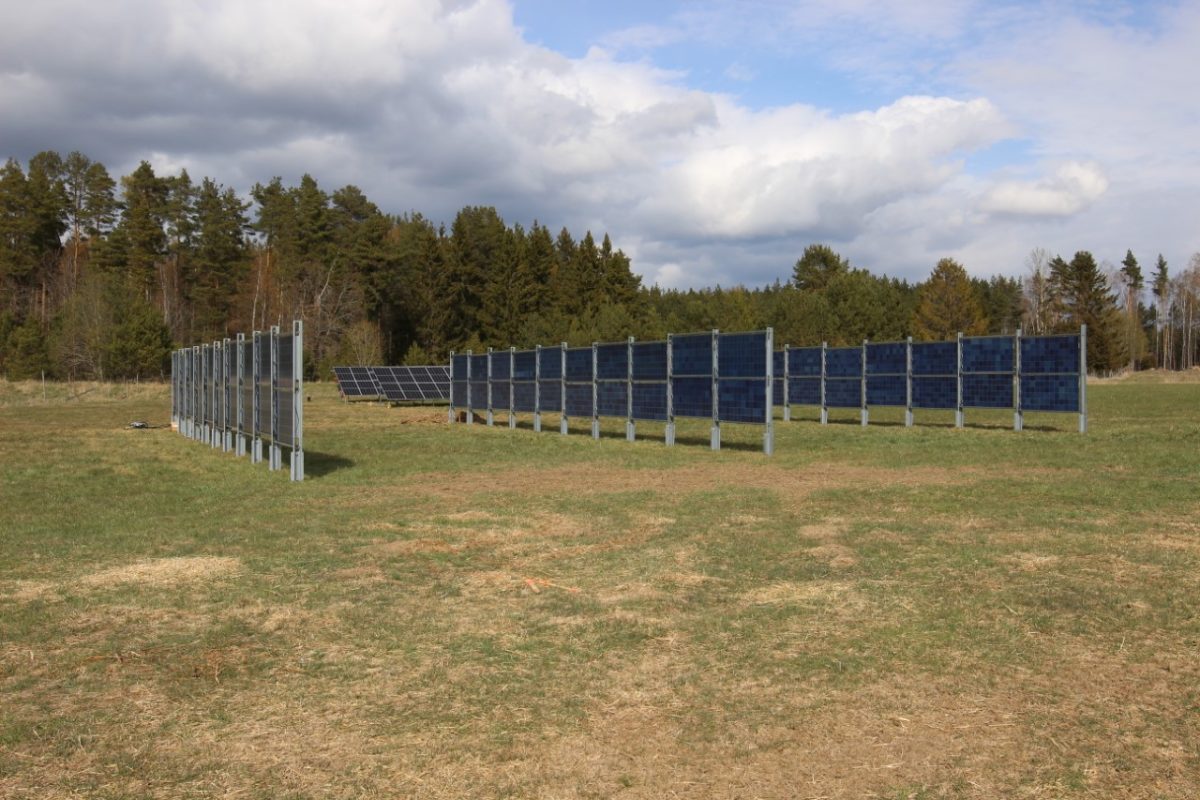Researchers at the University of Turku in Finland have developed a methodological workflow to boost electricity yield in bifacial vertical PV systems that are connected to low-voltage (LV) grids located at high latitudes and have different panel locations, orientations, and technologies.
They explained that their new approach is intended at avoiding voltage rise in the network, which occurs when PV generation exceeds demand, with high voltages becoming potentially able to damage the grid itself and the electrical devices connected to it. “Thus, the voltage must be restricted below a threshold either by identifying the distribution grid’s maximum allowed PV capacity or by setting a limit to the maximum allowed PV production and curtailing excess production,” they explained.
The new methodology works through five main steps: data collection, decomposition modeling, transposition modeling, electrical and thermal modeling, and LV grid analysis. The second and third steps provide a calculated global tilted irradiance (GTI) profile for the chosen location, time, and PV orientation, which is then converted to PV electricity output, considering weather data and PV system properties. The LV grid analysis prevents the oversizing of the PV system in order to avoid overvoltage.
The scientists applied the workflow to different cases of monofacial projects and bifacial vertical PV systems. They analyzed the PV production profile, electricity load profile, and the combination of variables to the PV hosting capacity, which they said is the key factor in avoiding overvoltage events.
Through their analysis, the academics ascertained that the maximum allowed PV capacity is generally limited by short temporal periods with a duration of between 1 and 30 minutes. These phases are characterized by high PV generation and sudden variations in the electricity load and PV production. “This highlights that managing such periods with different voltage regulation devices or allowing over- and undervoltage events to occur in the short term can significantly increase the PV hosting capacity,” they stated.
Popular content
According to their findings, vertical bifacial PV may have a 46% higher power yield compared to monofacial conventional counterparts in the Nordics, while also having an improved temporal match between PV generation and consumption.
The new method is presented in the paper “A comprehensive methodological workflow to maximize solar energy in low-voltage grids: A case study of vertical bifacial panels in Nordic conditions,” published in Solar Energy.
“Further work is needed to include more realistic electricity load models and economic analyses in the methodology,” the Finnish team concluded. “Moreover, since the used test network only covered very small geographic area, resulting in low losses in power lines, it was likely to overestimate the absolute values of maximum PV production compared to most real-world distribution grids, although this allowed the comparison of the relative values between different cases.”
This content is protected by copyright and may not be reused. If you want to cooperate with us and would like to reuse some of our content, please contact: editors@pv-magazine.com.



By submitting this form you agree to pv magazine using your data for the purposes of publishing your comment.
Your personal data will only be disclosed or otherwise transmitted to third parties for the purposes of spam filtering or if this is necessary for technical maintenance of the website. Any other transfer to third parties will not take place unless this is justified on the basis of applicable data protection regulations or if pv magazine is legally obliged to do so.
You may revoke this consent at any time with effect for the future, in which case your personal data will be deleted immediately. Otherwise, your data will be deleted if pv magazine has processed your request or the purpose of data storage is fulfilled.
Further information on data privacy can be found in our Data Protection Policy.